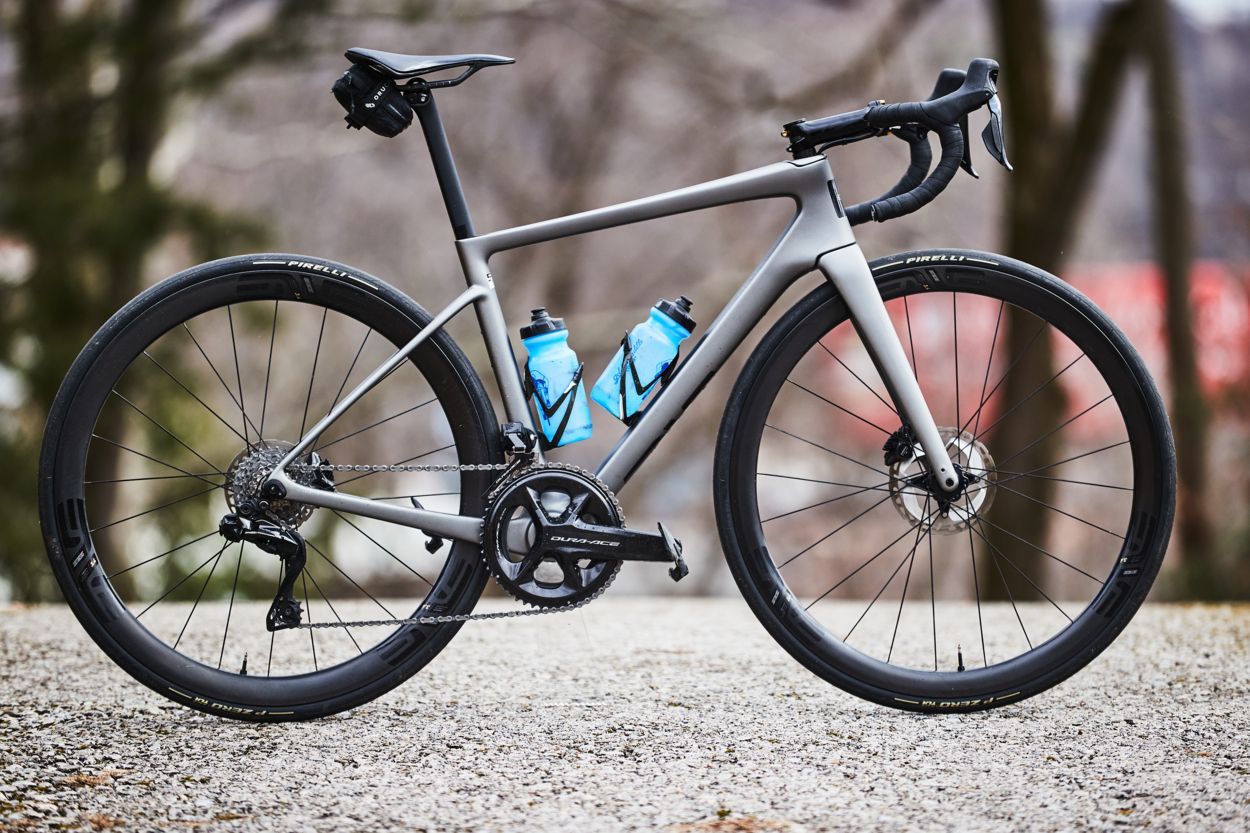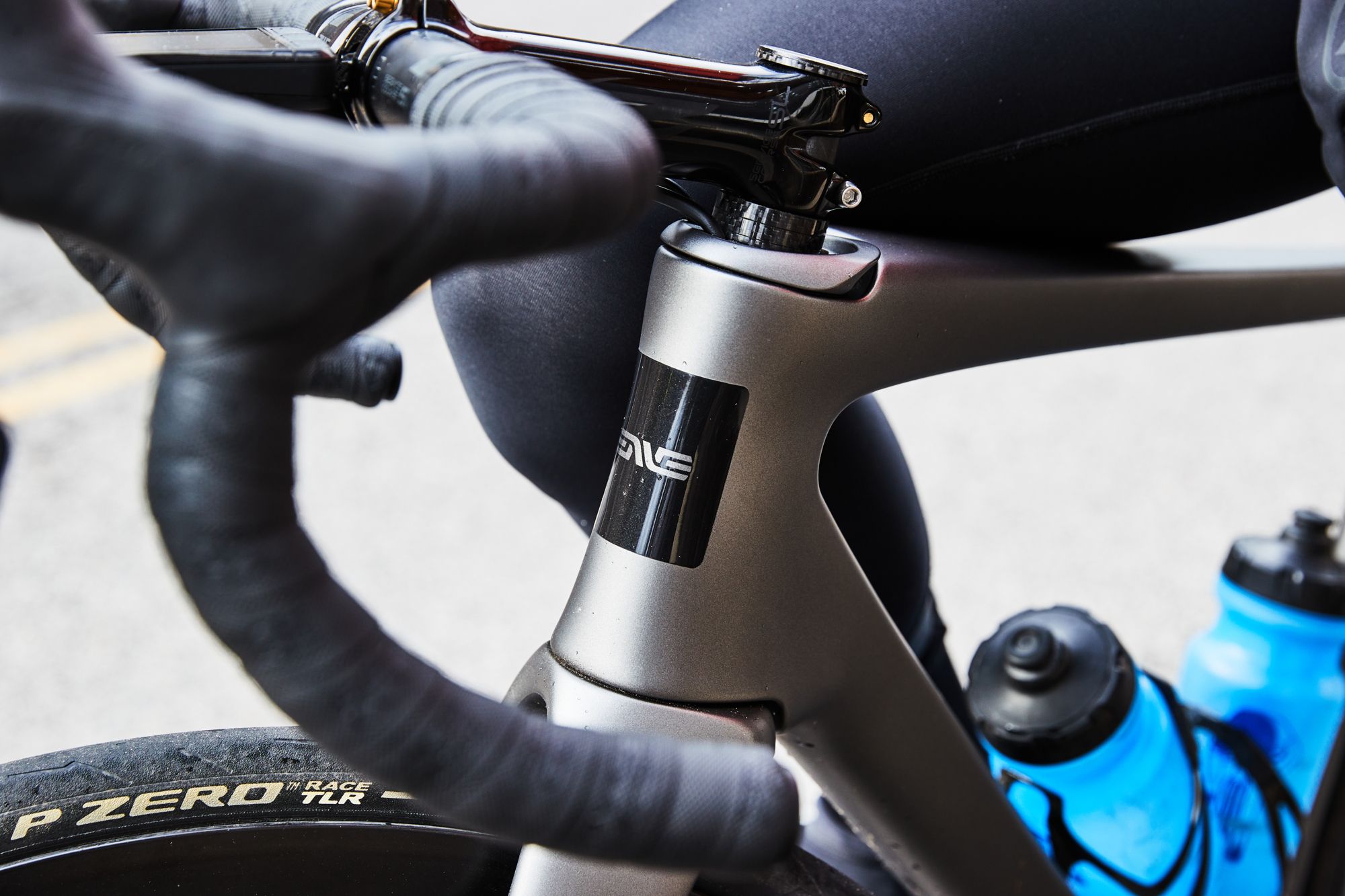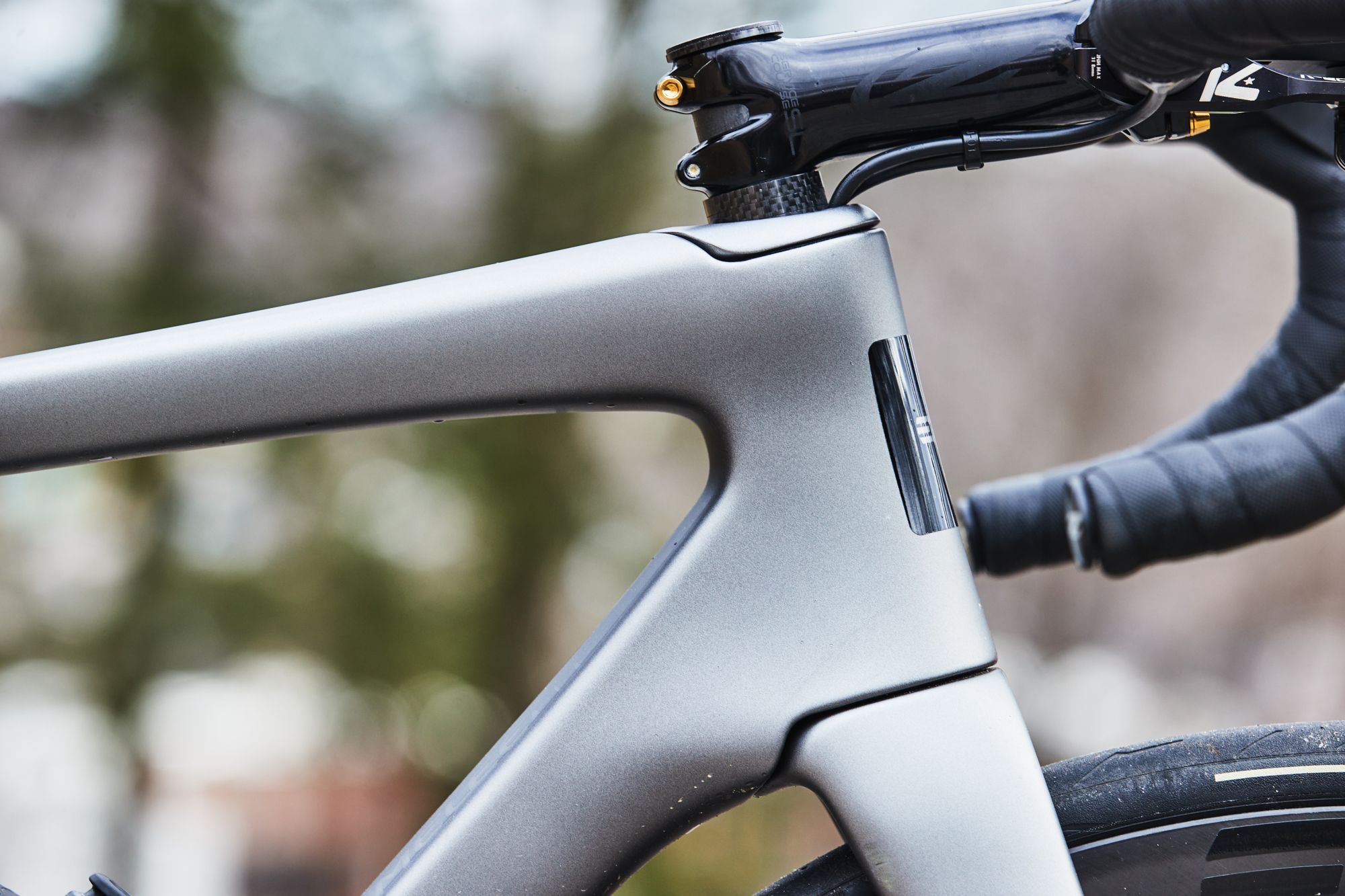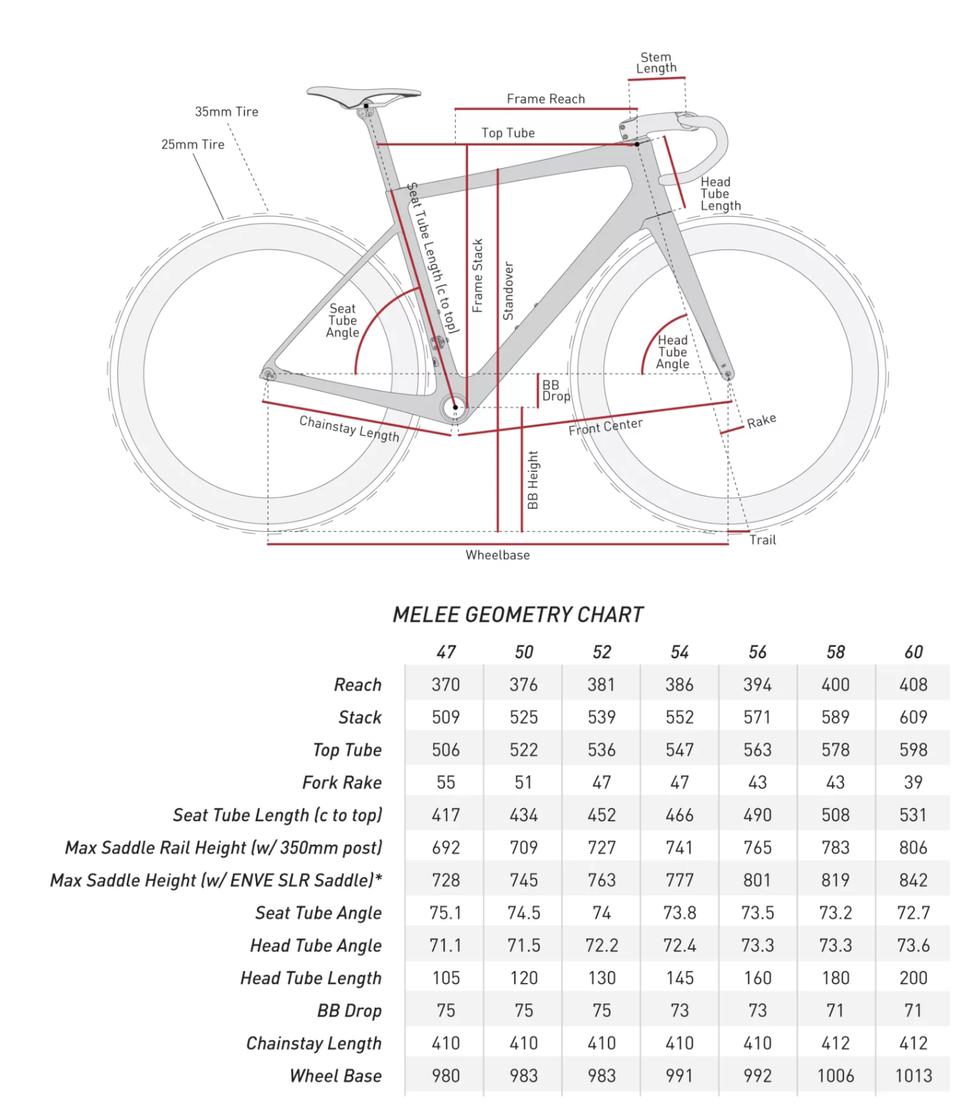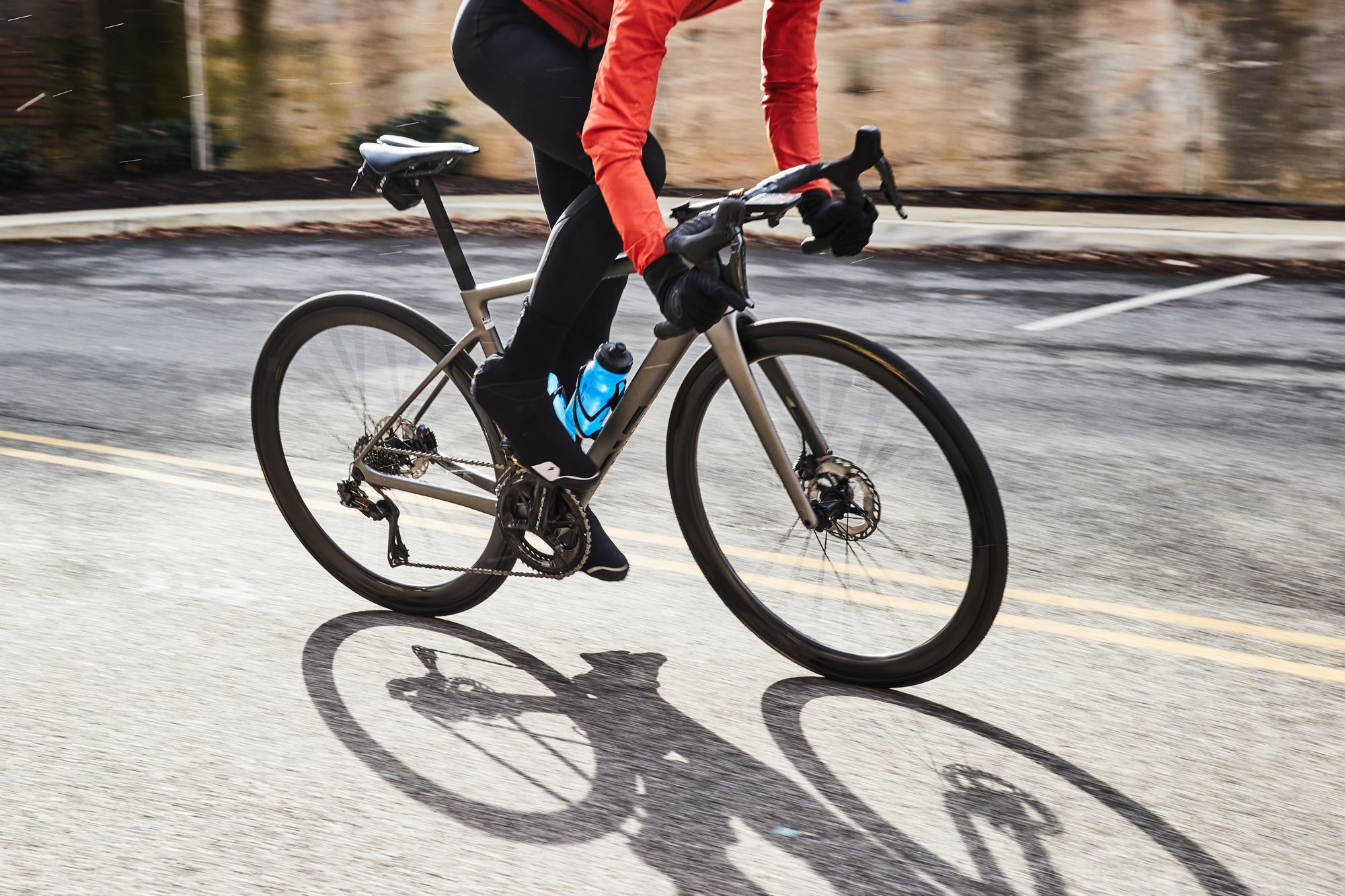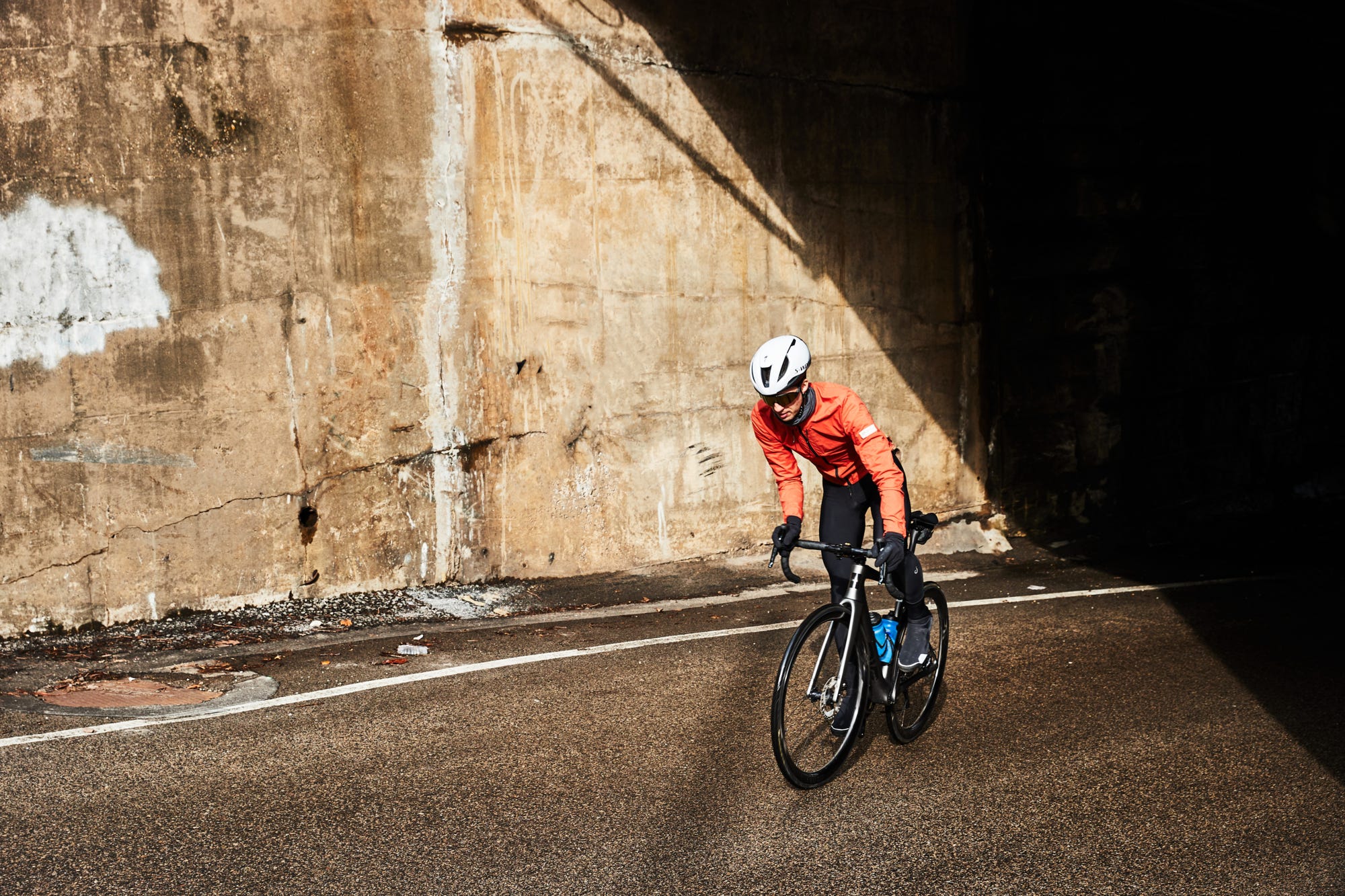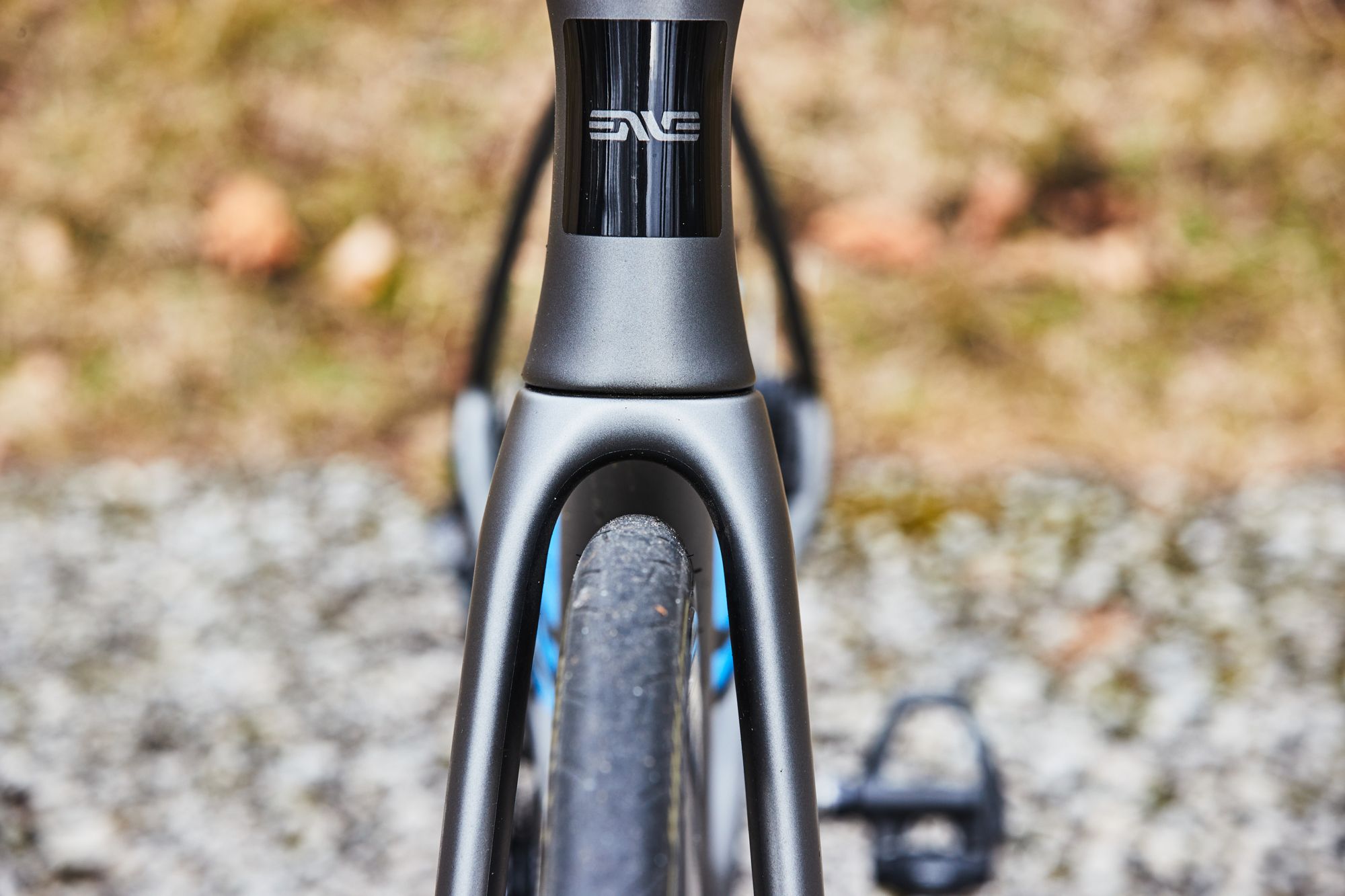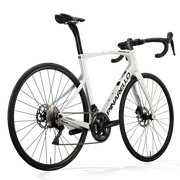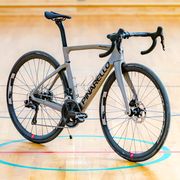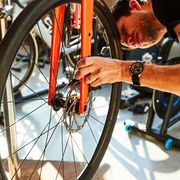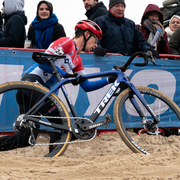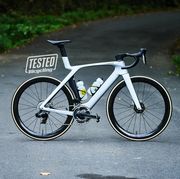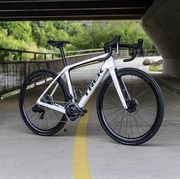The Takeaway: The Melee is a road bike so versatile that calling it a race bike just doesn't feel fair, even if it's an incredibly capable one.
- Light enough for the climbers and aero enough for the sprinters.
- Sold as a frameset ready for a custom build with bars, stem, and seatpost.
- Fender mounts and room for 35mm tires.
When you hear the name Enve Composites, fancy U.S.-made carbon wheels, carbon forks, bars, stems, and seatposts will probably be the first thoughts that enter your mind. For the past 16 years, these parts found their way onto some of the most drool-worthy custom bikes. Enve built its reputation in the world of bespoke bicycles and used that foundation to grow its business from a niche high-end wheel company to a more mainstream presence in cycling.
In March of 2021, Enve returned to its boutique roots with a product that few outside the company saw coming, a custom carbon road frame manufactured at Enve’s Ogden, Utah headquarters. This initial bike, simply named Custom Road, is constructed from several uniquely molded carbon pieces. The whole point of the Custom Road is that it is custom-built; it requires an incredibly high degree of attention from a dedicated production team. Enve’s second road model, the Melee, was built on the foundation created by the Custom Road. But, it would be simplistic to say that the Melee is the stock version of the Custom Road.
The Melee uses a monocoque construction method versus the more labor-intensive processes of bonding carbon tubes and then overwrapping with more carbon. The monocoque frame results in a lighter, more aerodynamic frame. The process is so different that it would have been unrealistic to try to produce the Melee alongside the Custom Road in Utah. Instead, the Melee is Chinese-made. And inside the same factory Enve has used for years to manufacture its forks and handlebars.
Without the option for custom geometry, the Melee exists in the realm of modern production road bikes, uniting formerly separated categories of aero road, climbing, and classics race bikes into one. The Melee is light, weighing 891 grams for a 52cm painted frame with all the hardware. The fork adds another 420 grams, and the d-shaped Enve seatpost (proprietary to the Melee) is an additional 197 grams.
Enve optimized the Melee’s geometry for 27-31mm wide tires, officially claiming the frame clears rubber up to 35mm. We even spotted Enve-supported riders racing the Melee in dry, smooth gravel events with 37mm tires stuffed into the frame. But Neil Shirley, Enve’s Marketing Manager, insists that the Melee is not a gravel bike. “The Melee is without question a road bike.” Shirley pointed out that many bikes currently raced at the World Tour level have generous tire clearance. “The tire clearance is there for those that want to race events like Belgian Waffel Ride (a gravel event that is more of a dirt road race) or Paris-Roubaix.”
Enve used its years of aerodynamic expertise to make the Melee “competitively aero with other road bikes on the market,” according to Shirley. The bike’s frame shape takes a “form follows function” approach. The headtube has an hourglass shape with a bit of depth, which integrates with the aerodynamically shaped fork legs. All of this flows into a truncated aerofoil-shaped downtube. At the rear are a pair of dropped chainstays and a seat tube that also uses a truncated aerofoil shape.
Increasing the Melee’s aerodynamic performance, Enve designed the chassis with fully-hidden brake lines inside the handlebar and stem. To make set up and fit easier, Enve includes a stem and bar of riders choosing in the purchase price of the Melee and has all kinds of helpful charts and data to help riders figure out what they need. If (like me) you somehow manage to get the stem length wrong, it is possible to run the Melee with partially exposed cable routing; instead of going through the bar and stem. Simply run the cables under the bar tape, then along the stem and into the frame at the headset.
This setup takes a small amount of file work on a 3mm spacer to get around the Token internal routing system that Enve uses, but the result has some notable upsides. The ability to swap stem lengths and not need to cut and bleed brake lines saves time, money, and headaches. If they wanted to, Enve could 3D-print a tidy adapter, spacer, and cover to make this option seamless for riders. Because as much as some riders love the fully-hidden look, it’s nice having the less integrated choice.
Combining all these performance features, Enve’s vision for the Melee becomes clear: A bike meant to be the ultimate all arounder. It’s a frame that is both lightweight enough to please the climbers but with enough aero shaping for the criterium specialists. Mixed into that is enough clearance for a pair of large-volume tires on wide-rimmed wheels. The Melee checks almost every box for what I want from a modern disc brake road bike.
Geometry
Enve offers the Melee in seven frame sizes, from 47 to 60cm. What’s most notable here is that Enve used five different fork rakes across the size range. This detail ensures that riders of the smallest and largest sizes get the same handling characteristics as riders in the middle of the size range. Many brands avoid using this many different forks for their bikes (whether to save cost or development time) and use the same model across entire size ranges. Hopefully, the extra effort on Enve’s part will be more common in the industry going forward.
Pricing and Competition
Enve sells the Melee as chassis only. There are no options for a complete bike build. For $5,500, riders get a Melee frame and fork plus an Enve bar, stem, and seatpost. Riders can select stem lengths from 80mm to 130mm (all with a -7º angle), bar widths from 380mm to 460mm, and can specify a seatpost setback of 0º or 20º to dial in their fit when ordering.
The price puts the Melee near the peak of modern high-end production road bikes. And it’s not a coincidence that the $5,500 price tag matches that of an S-Works Tarmac SL7 frameset. You could easily spend more on a frame, placing you in the realm of Italian superbikes like the Colnago C68 or Pinarello F, or potentially buy something custom-built like an Argonaut RM3 or an Enve Custom Road. The options to spend less for something as capable and lightweight as the Melee are more limited.
Some contenders, like the Cannondale SuperSix Evo, aim for the Melee’s balance of performance, aerodynamics, and comfort. But riders looking for the Melee’s specific blend of features (low weight, roomy tire clearance, threaded bottom bracket, hidden fender mounts, and performance-originated geometry) might need to look to smaller brands or custom builders. And will likely need to forgo carbon as a material choice to get below the Melee price.
Ride Impressions
Race bikes are usually singularly focused. Engineers design them to be good at going fast, often at the expense of conveniences like tire clearance, comfort, and versatility. Because the Melee doesn’t deprioritize these things, it lends itself to being viewed as something other than a race bike. Some riders might read, “clearance for 35mm tires” and incorrectly write the Melee off as an only all-road bike. It just takes a few pedal strokes on the Melee to banish such notions.
Enve also built an exceptional race bike with the Melee. To start, it’s very light—fully built with Dura-Ace 9270, Enve 3.4 SES wheels, and an alloy bar and stem—the Melee weighs just 16.2 lbs. That’s with pedals, bottle cages, and a K-edge computer mount. Building a Melee under the 15-pound UCI weight limit would take some work, but it is certainly achievable. The massive downtube, bottom bracket, and stout chainstays provide the power transfer you’d expect from a top-tier race bike. Even the tiniest injection of pace into the pedals resulted in an immediate surge forward on flat or hilly roads.
The Melee’s performance is matched beautifully with its geometry. Race bikes often teeter on this fine line between being too twitchy or not aggressive enough. Enve got it just right with the Melee. Above twenty miles per hour, the Melee feels like you can point it anywhere, and it refuses to get knocked offline. The Melee never felt like it suffered from oversteer, and I was never fighting to pull the bike tighter into a corner. Conversely, it never felt like the front end was overly eager to fall into the turn.
These handling characteristics blend perfectly with the Melee’s stiffness and comfort. The front end of the bike is stiff, direct, and precise. It perfectly guides the Enve in the desired direction. At the same time, the frame’s rear feels much smoother, planted, and stuck into corners. The front end throws the bike into the apex, and the bike’s rear provides the traction to carry it through. The result is a bike that feels exceptionally well-balanced.
The Melee’s versatility might also be its Achilles' heel to some. In its quest to be an all-arounder, the Melee isn’t a world-beater in any one way: Certain bikes are lighter, and others are more aerodynamic. Still, the Melee is far from heavy, and while it’s slower than a dedicated aero bike, it feels fast, and perhaps more importantly, it rides incredibly. I think that’s what kept me continuously returning to the Melee. Whether it was a fast-paced group ride or a long-distance adventure with a smattering of gravel and dirt roads, the bike always felt like the right tool for the job. It’s the rare bike that simultaneously feels perfectly suited to an office park criterium and a 140-mile dirt road race.
Test Editor Dan Chabanov got his start in cycling as a New York City bike messenger but quickly found his way into road and cyclocross racing, competing in professional cyclocross races from 2009 to 2019 and winning a Master’s National Championship title in 2018. Prior to joining Bicycling in 2021, Dan worked as part of the race organization for the Red Hook Crit, as a coach with EnduranceWERX, as well as a freelance writer and photographer.

